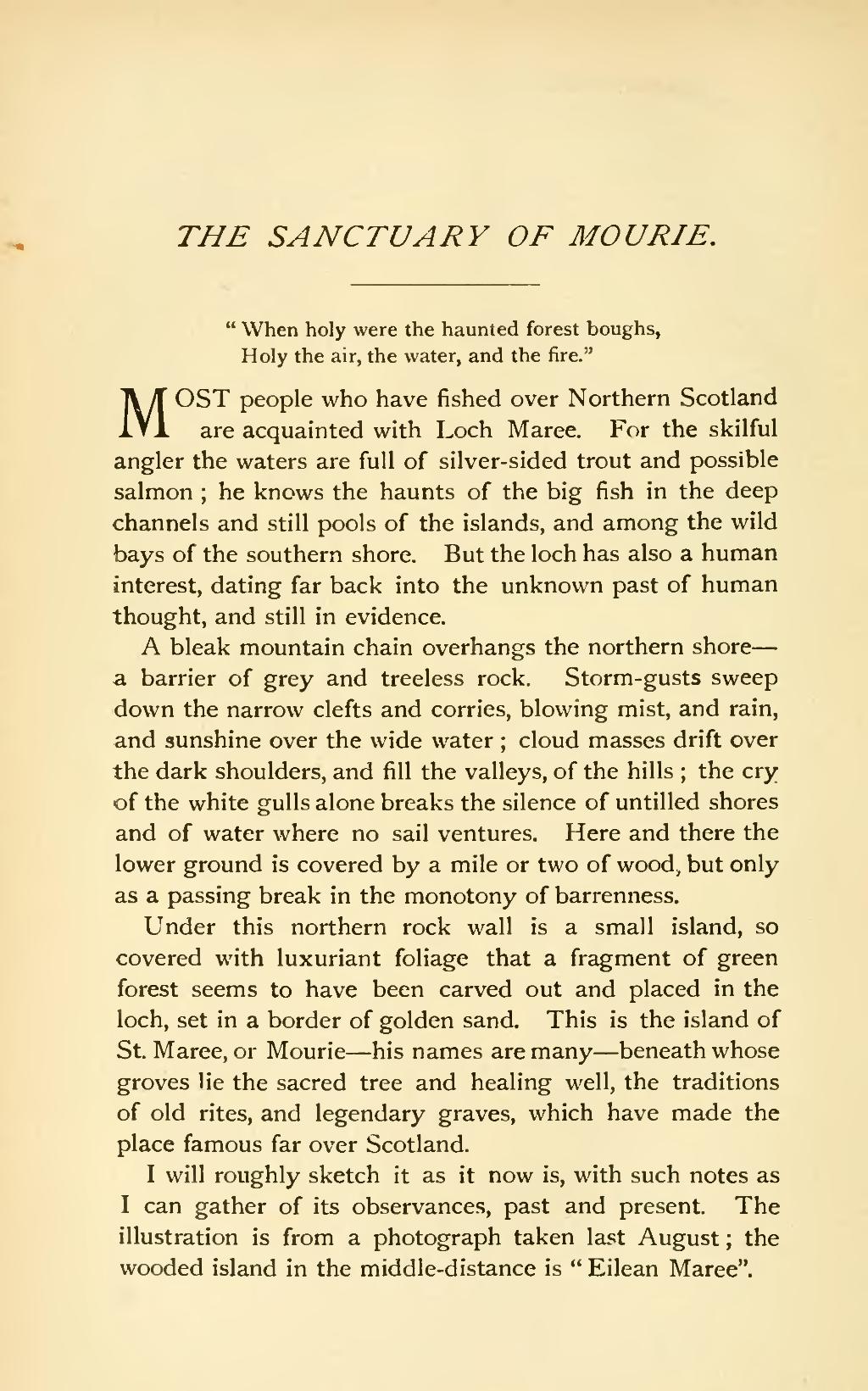THE SANCTUARY OF MOURIE.
"When holy were the haunted forest boughs,
Holy the air, the water, and the fire."
MOST people who have fished over Northern Scotland are acquainted with Loch Maree. For the skilful angler the waters are full of silver-sided trout and possible salmon; he knows the haunts of the big fish in the deep channels and still pools of the islands, and among the wild bays of the southern shore. But the loch has also a human interest, dating far back into the unknown past of human thought, and still in evidence.
A bleak mountain chain overhangs the northern shore—a barrier of grey and treeless rock. Storm-gusts sweep down the narrow clefts and corries, blowing mist, and rain, and sunshine over the wide water; cloud masses drift over the dark shoulders, and fill the valleys, of the hills; the cry of the white gulls alone breaks the silence of untilled shores and of water where no sail ventures. Here and there the lower ground is covered by a mile or two of wood, but only as a passing break in the monotony of barrenness.
Under this northern rock wall is a small island, so covered with luxuriant foliage that a fragment of green forest seems to have been carved out and placed in the loch, set in a border of golden sand. This is the island of St. Maree, or Mourie—his names are many—beneath whose groves lie the sacred tree and healing well, the traditions of old rites, and legendary graves, which have made the place famous far over Scotland.
I will roughly sketch it as it now is, with such notes as I can gather of its observances, past and present. The illustration is from a photograph taken last August; the wooded island in the middle-distance is "Eilean Maree".
